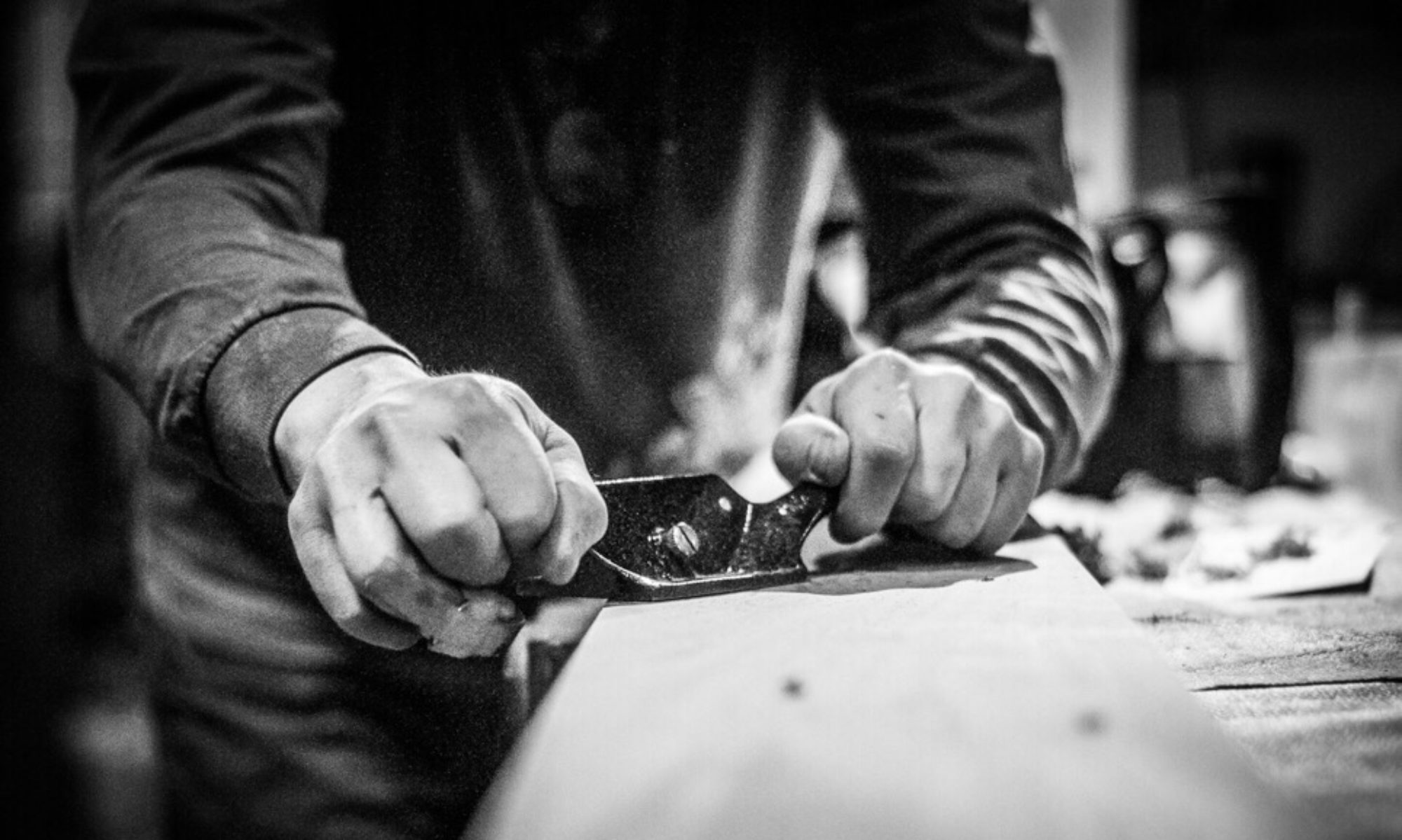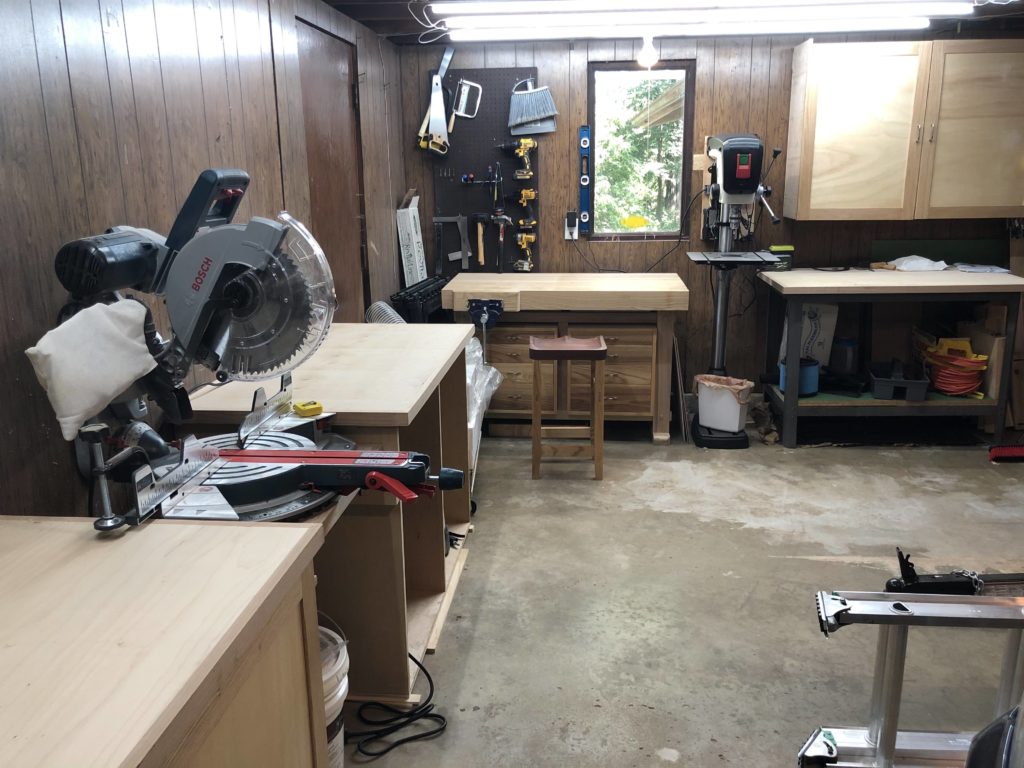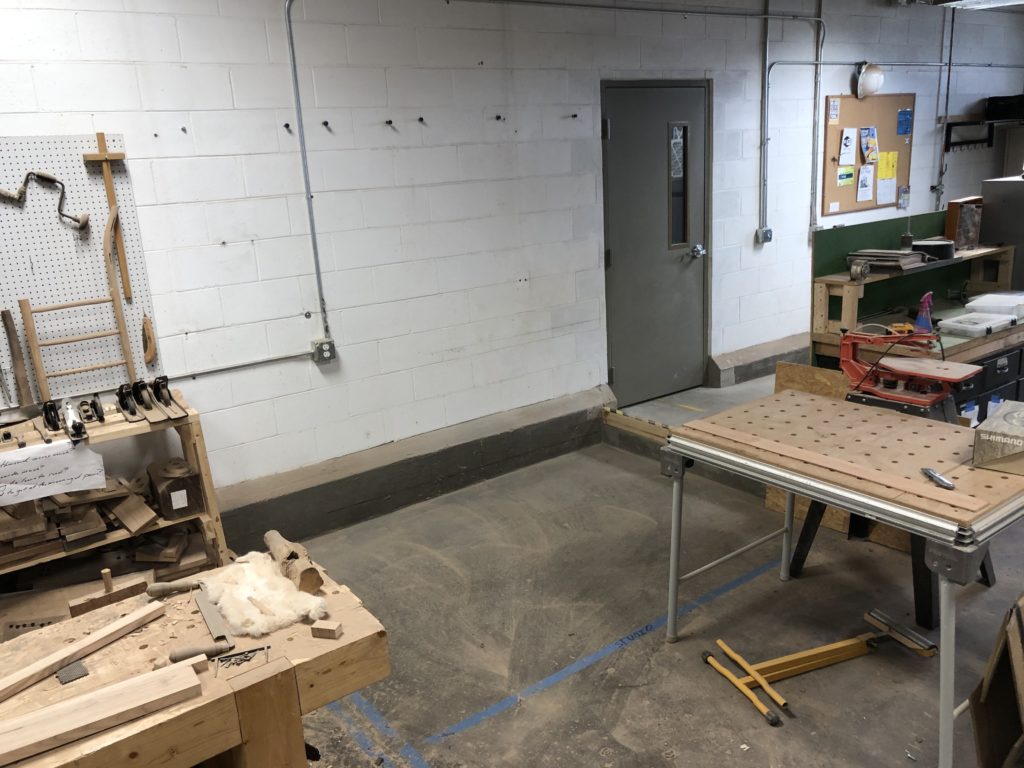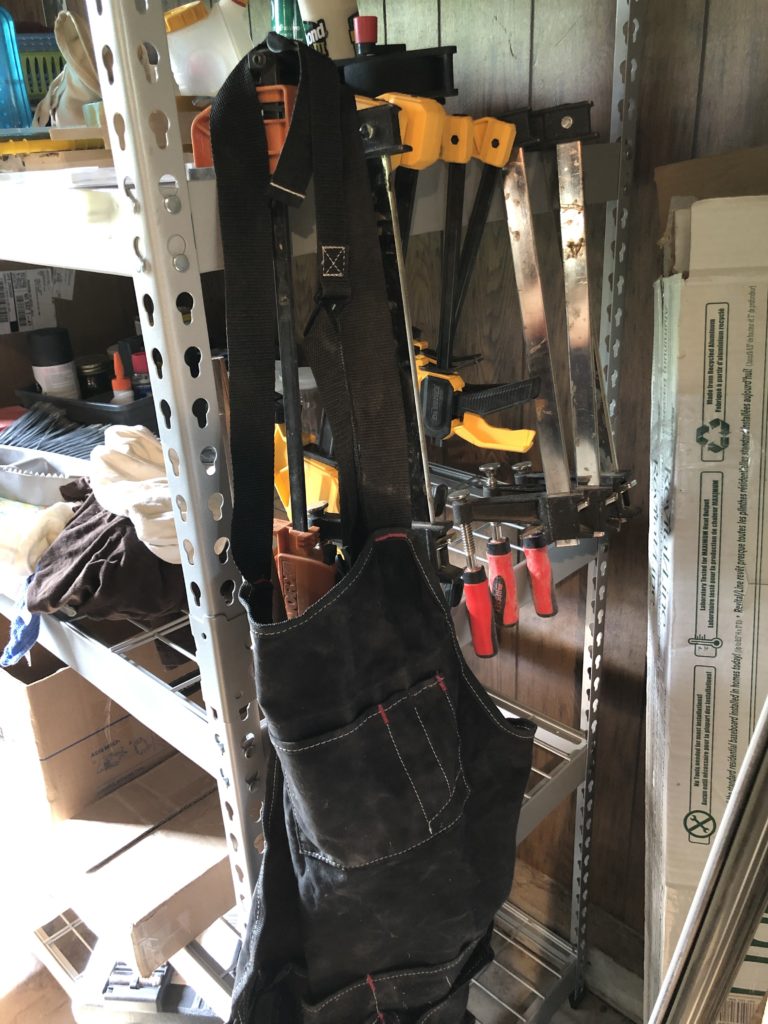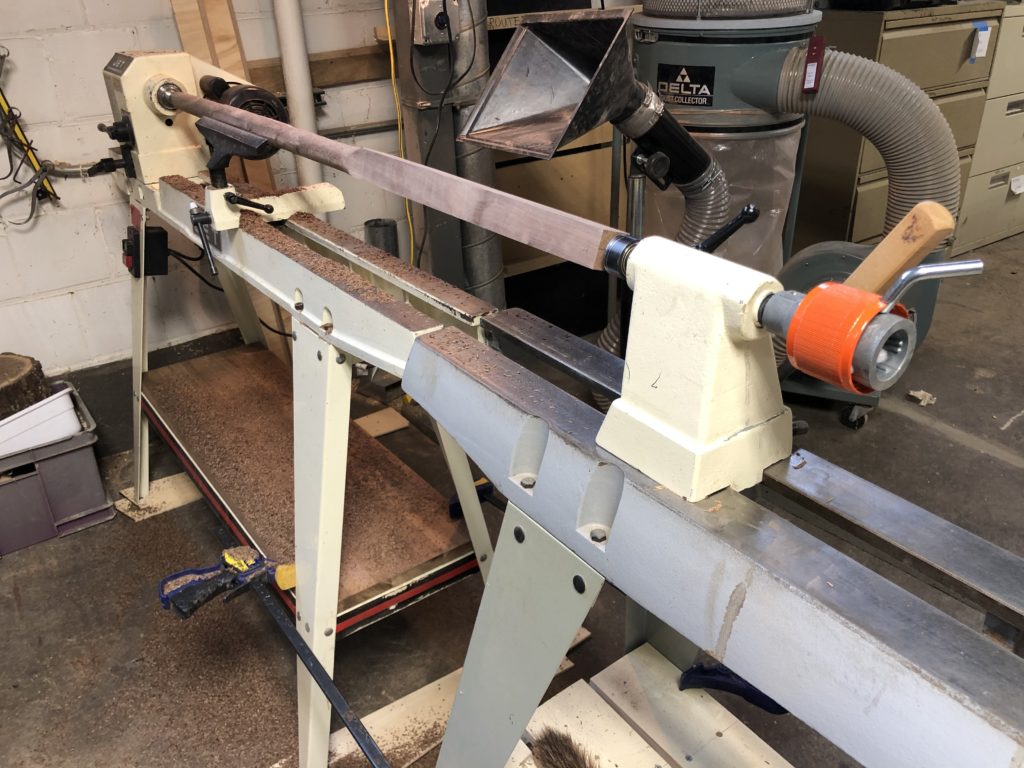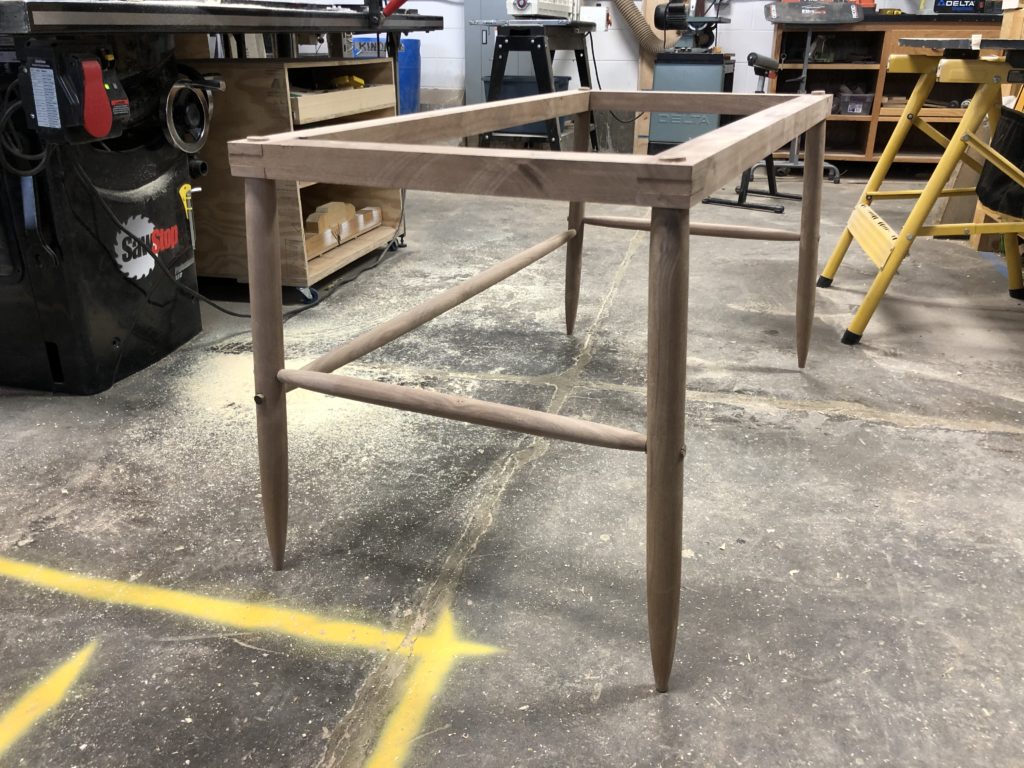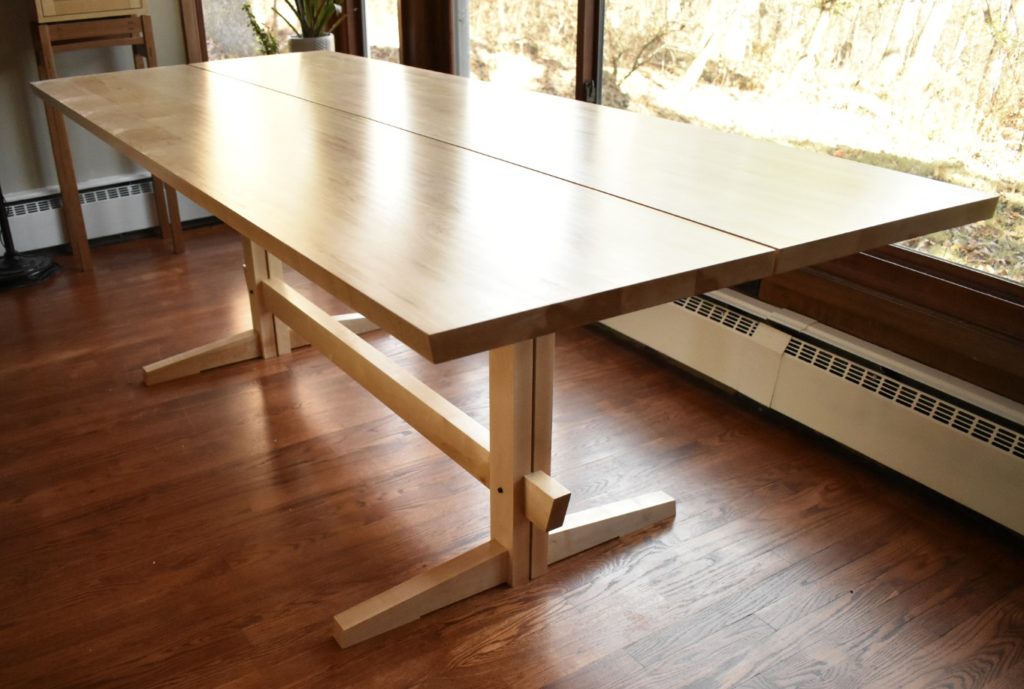
I’ve been waiting to make a dining table until after we put new flooring in so that there’s less stuff to move around when the time comes. But Thanksgiving was a month away and our guests needed something to gather around. I looked at some used tables as a temporary solution, but decided that a month was enough time to do this project. And even though the maple lumber itself is more expensive than a used table, I’d be making one eventually so I’d be saving money in the long run.
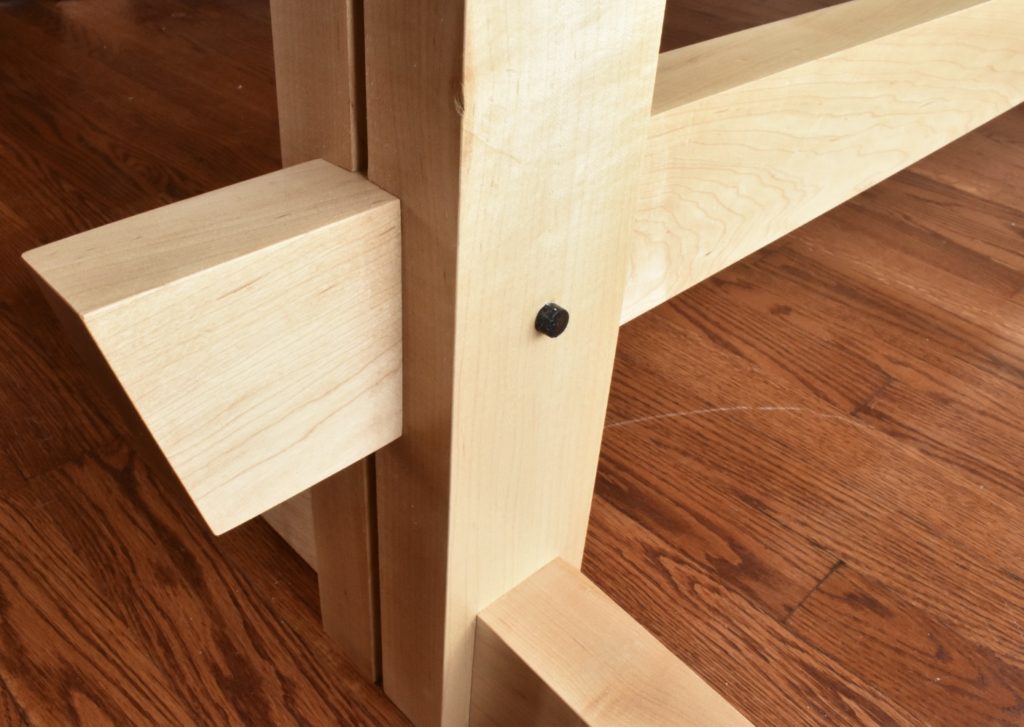
For some time, I had planned on making a copy of Ikea’s Mockelby table, and after taking another look, concluded that four weeks might not be enough time. The table has splayed legs and other angled joints. In fact, the legs are splayed in both directions, meaning that the ends of the legs would be a compound angle. My bedside table project taught me that angled joinery takes time to get right if you want no gaps. I didn’t want to risk it, so I looked for a different design.
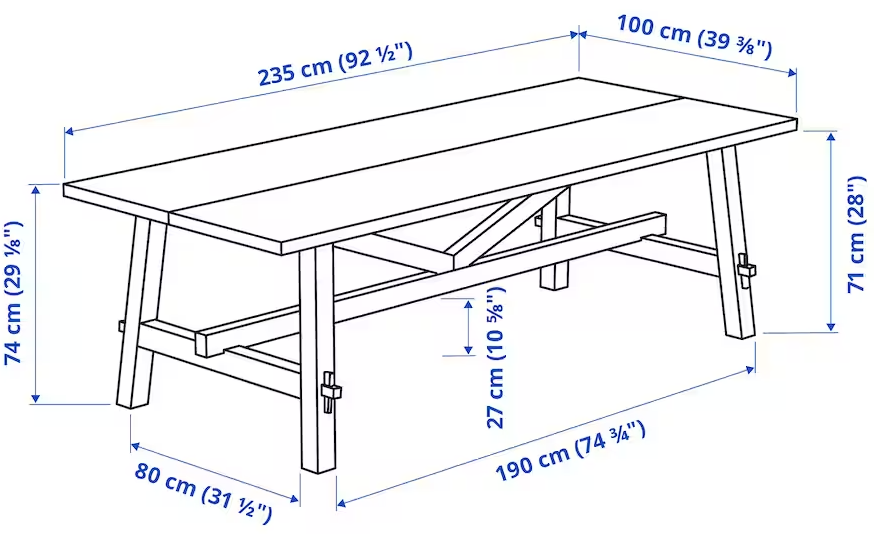
I found Marcus Soto’s trestle table and appreciated the simple, modern lines, which is partly due to the 90 degree joinery. I made a few modifications to it. First, I shortened the table by 8 inches so that it would fit in our dining room. Second, I kept the split table top design of the Mockelby. A practical benefit of a split top is that you save time by not having to join the two slabs together and flatten any misalignments. Last, I added an angle to the ends of the feet that I enjoy in George Nakashima’s work.
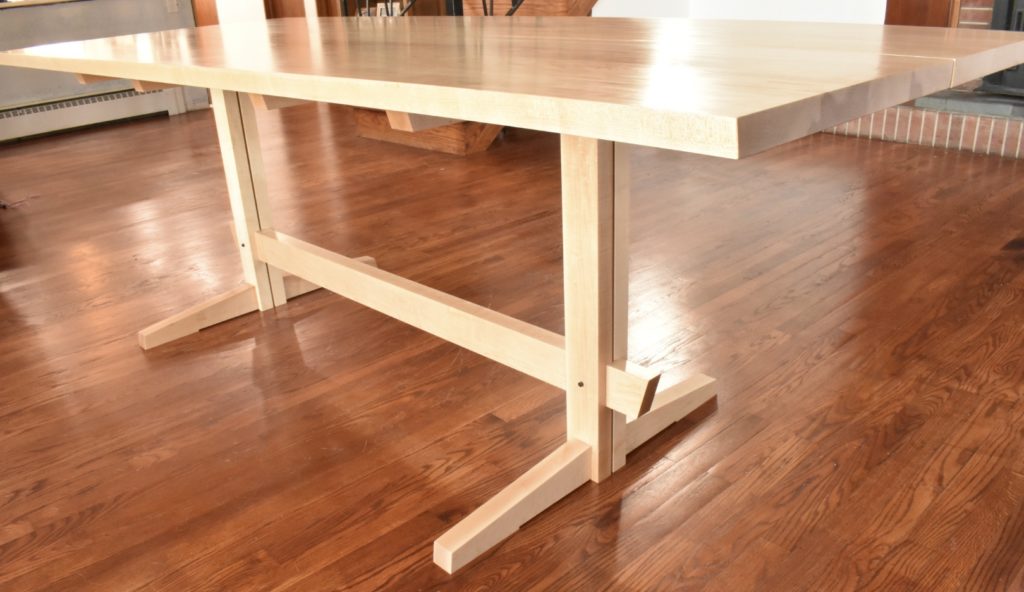
I made a couple quick temporary benches from some retired bed slats and finished everything just in time for the big day. I look forward to seeing the table gradually acquire an amber tone and maybe even some dents and scratches from the frequent use it is sure to get.
